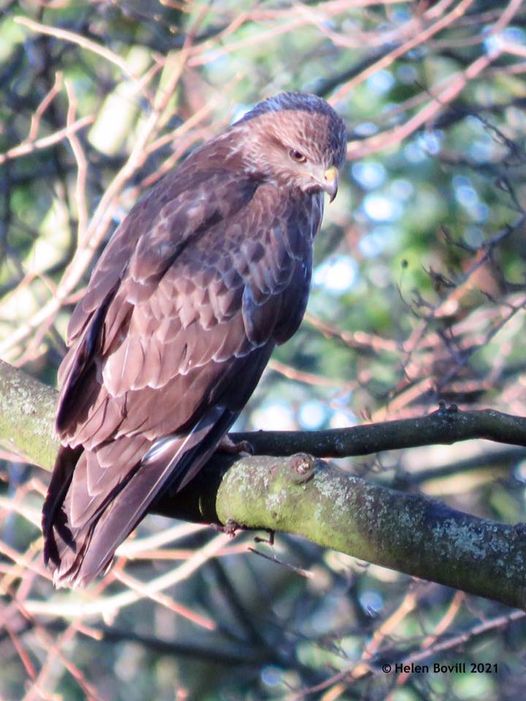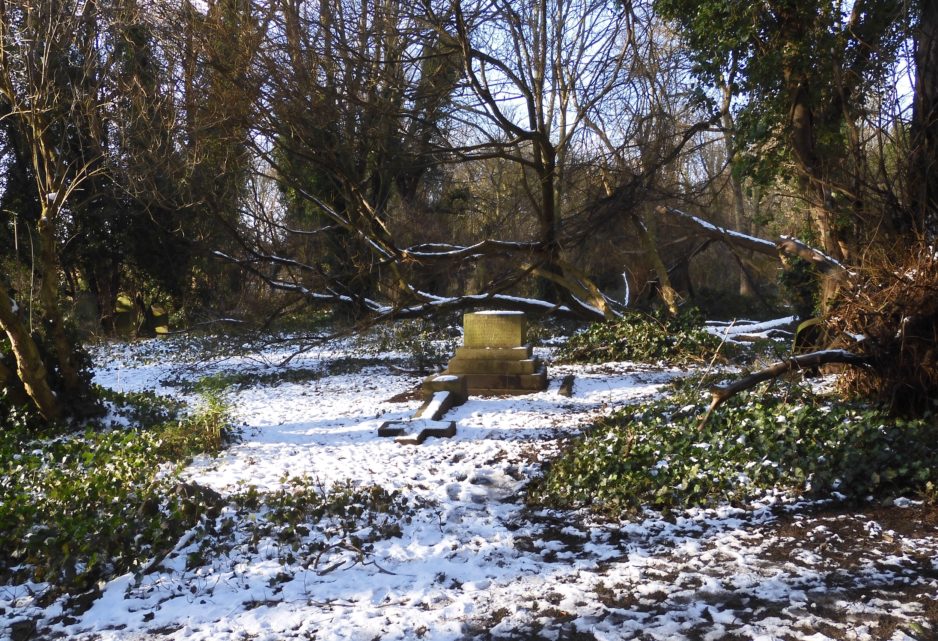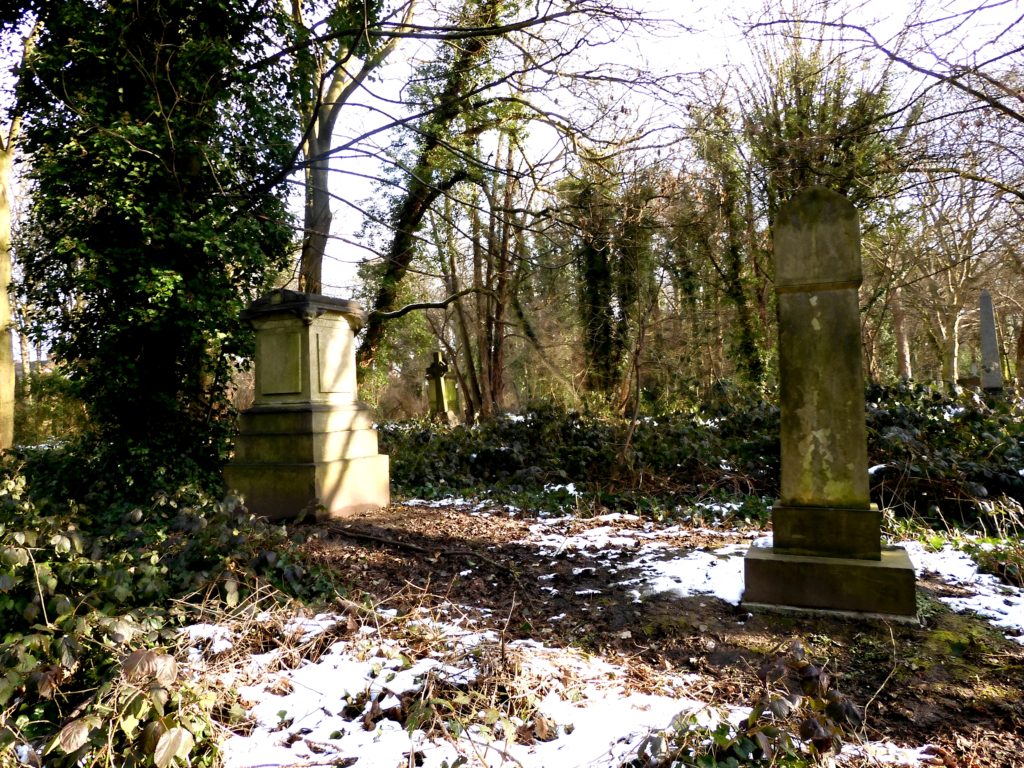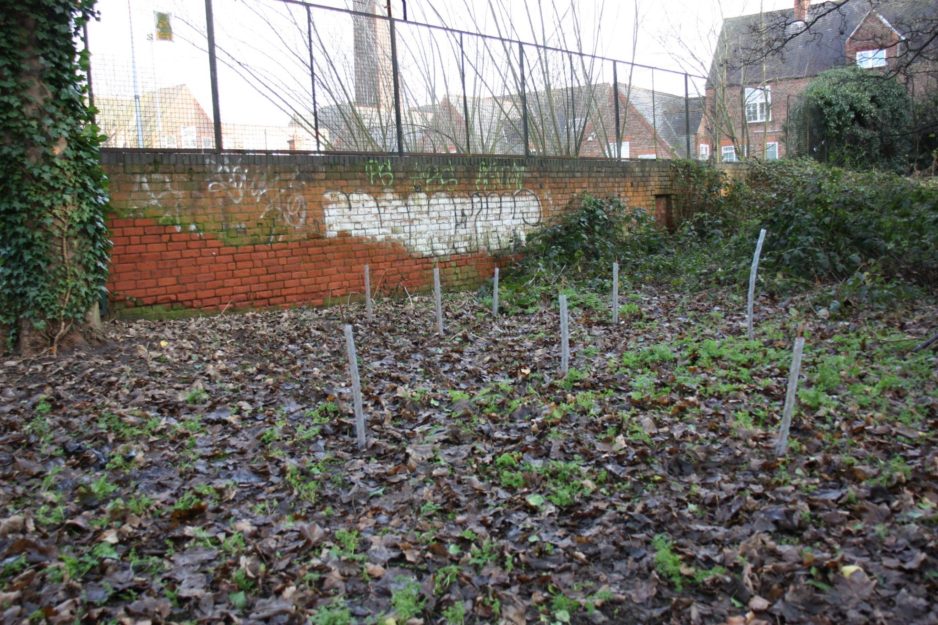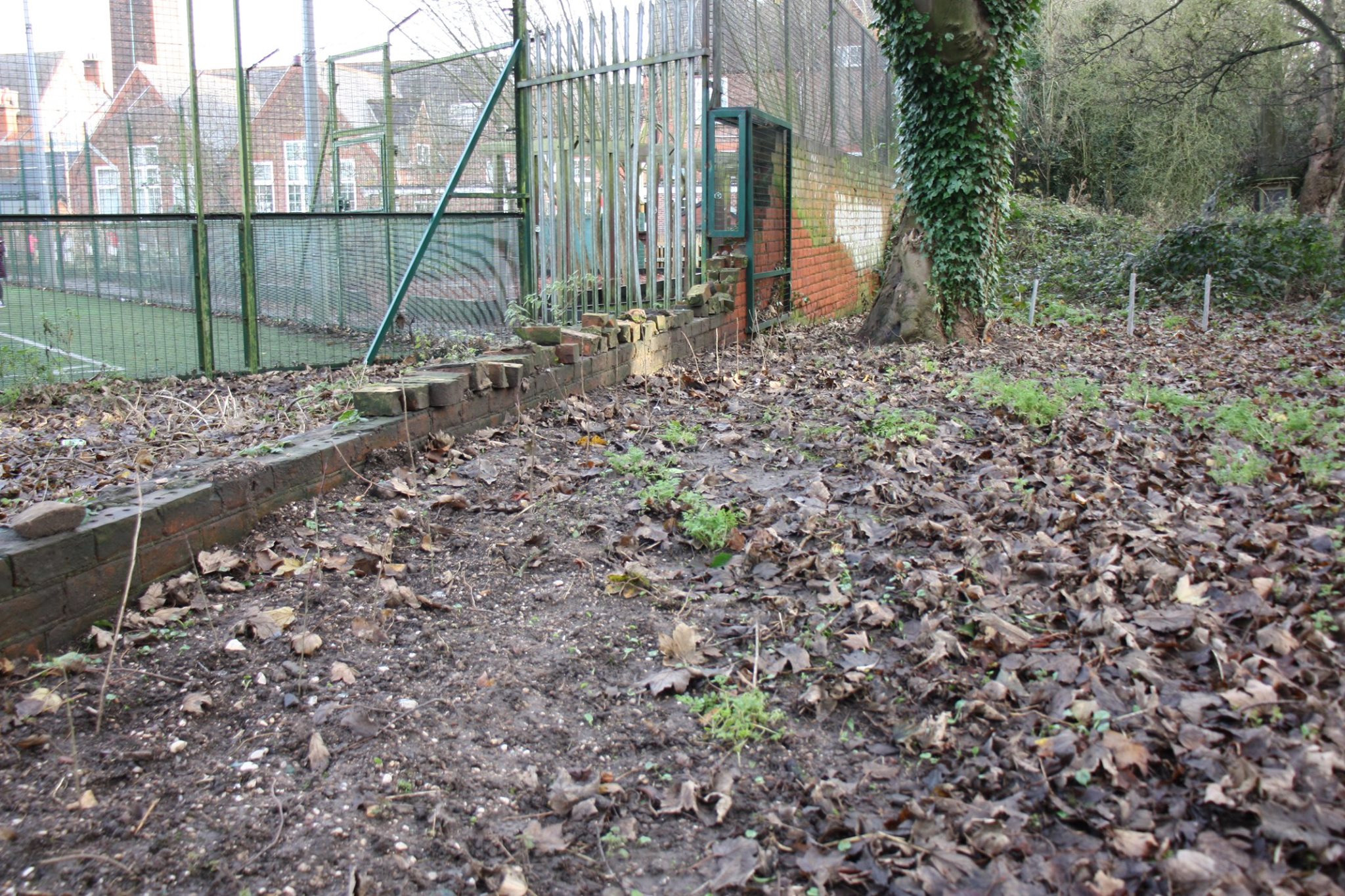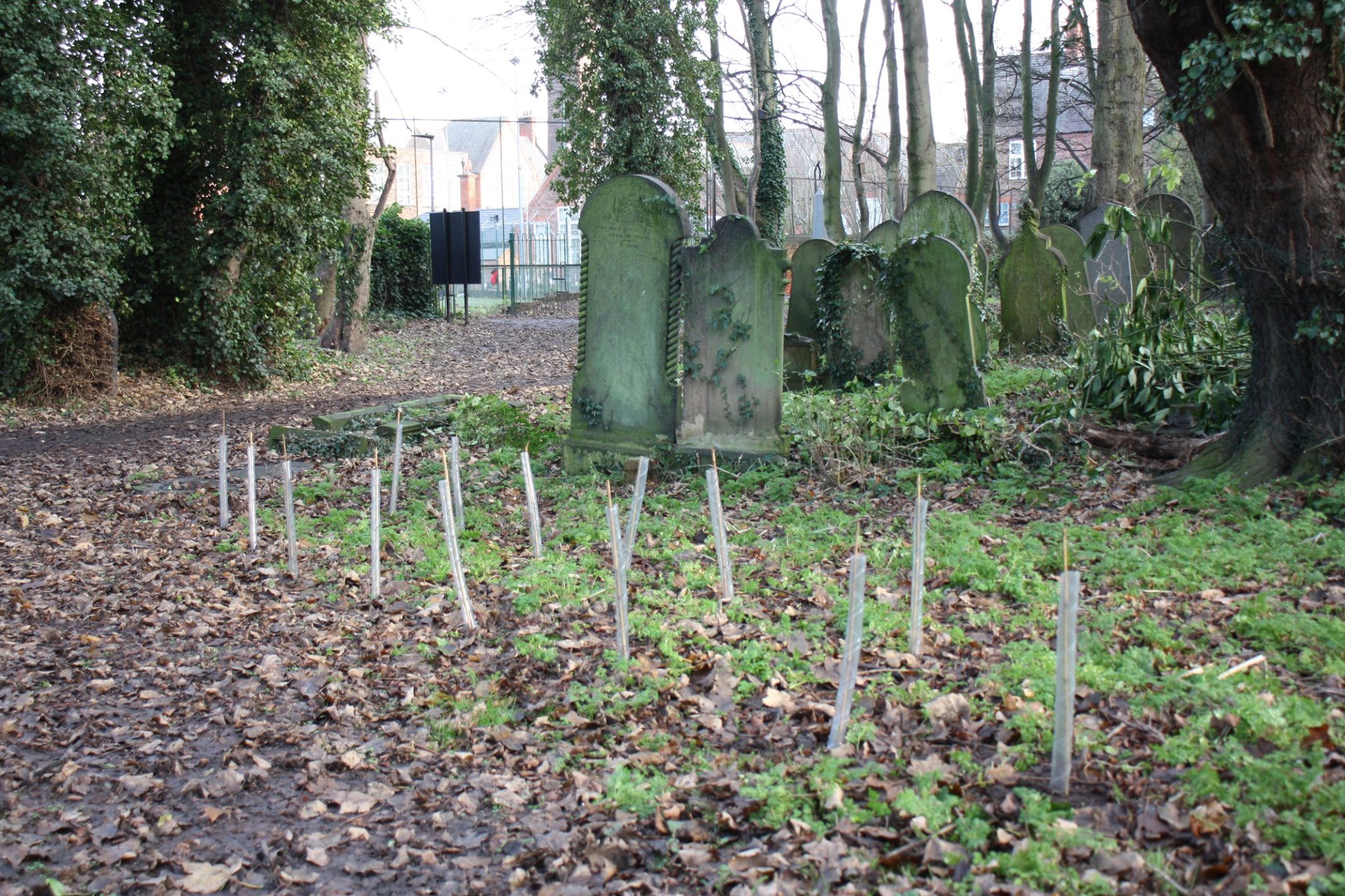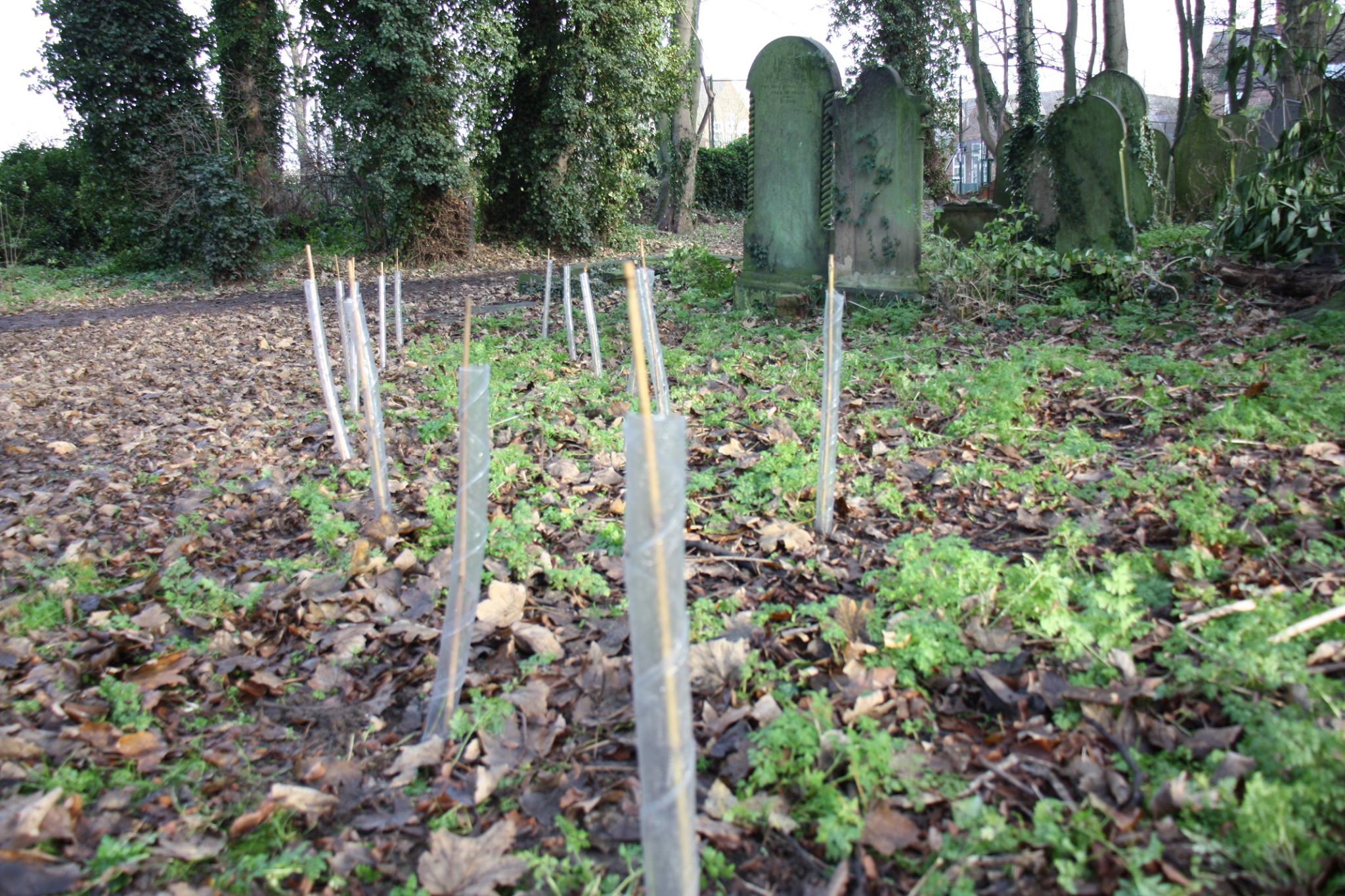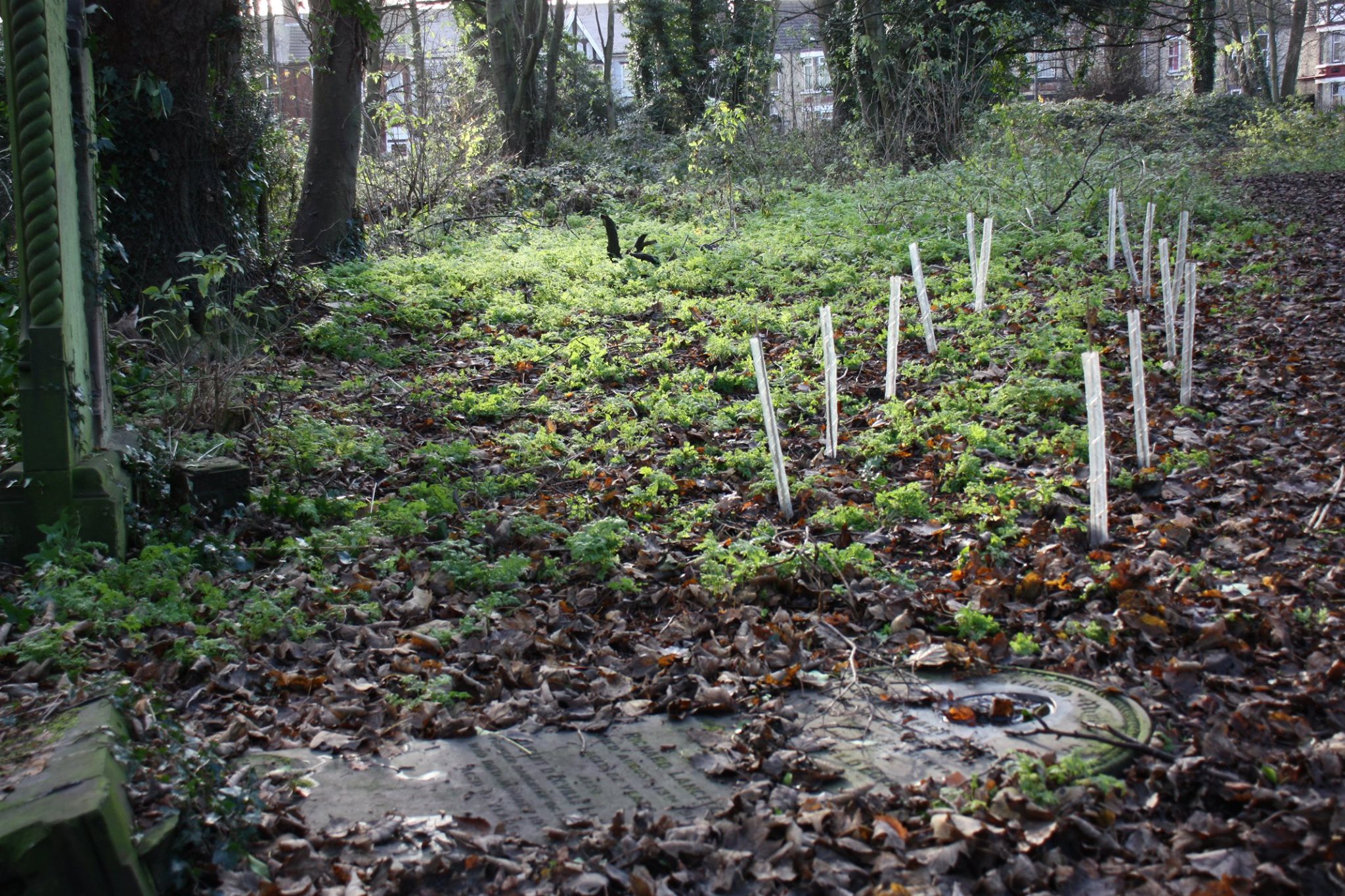2021: The story so far
January got off to a great start. The volunteers and visitors to the cemetery enjoyed some good and frequent views of a Buzzard. They’re not very common in and around Hull so to have one in the cemetery was an unexpected pleasure. It’s not known whether it’s male or female though, but it is still being sighted occasionally. February was a month of contrasts, with a week of snow and sub-zero temperatures at the start of the month. It ended with a week of sunshine and higher than usual temperatures. There was plenty of warm sunshine in March too.
Flowers
This winter was a bumper one for Snowdrops, with at least 3 different types in flower all over the site. The sunshine and higher than average temperatures during that last week of February gave the Lesser Celandines flowering in the grass verge on Spring Bank West a welcome boost. These low-growing bright yellow flowers open up in the sunshine and typically have between 8 and 10 petals although they can sometimes have as many as 12 or 13.
Lesser Celandines can also be found inside the Cemetery and these are now starting to flower, although being in partial shade they’re a little behind the ones on the grass verge and the stems of their flowers are noticeably longer as they reach for the sun.
The Blackthorn is already in flower – its white blossoms appear before the leaves do, unlike the Hawthorn which flowers slightly later in the Spring after its leaves have opened.
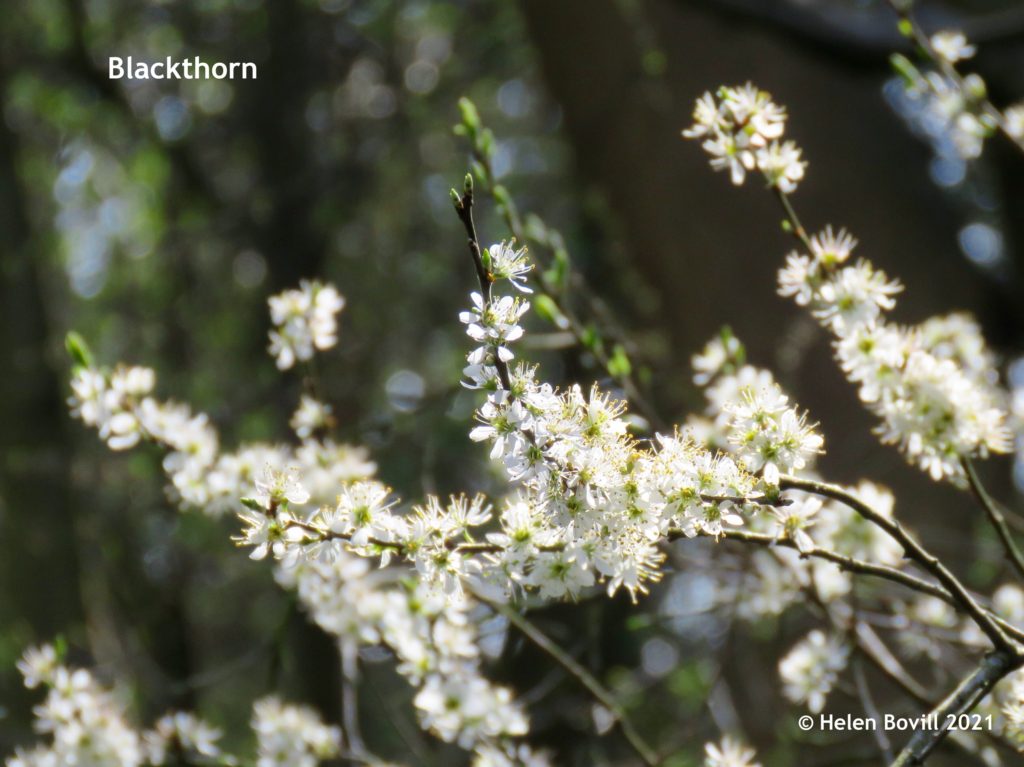
Butterflies and other insects
The Lesser Celandines provided a valuable source of nectar for some early butterflies emerging in late February. I counted 8 Small Tortoiseshells one day, plus a Peacock. Both species overwinter as adults in sheltered vegetation and will no doubt have been tempted out by the warm sun.
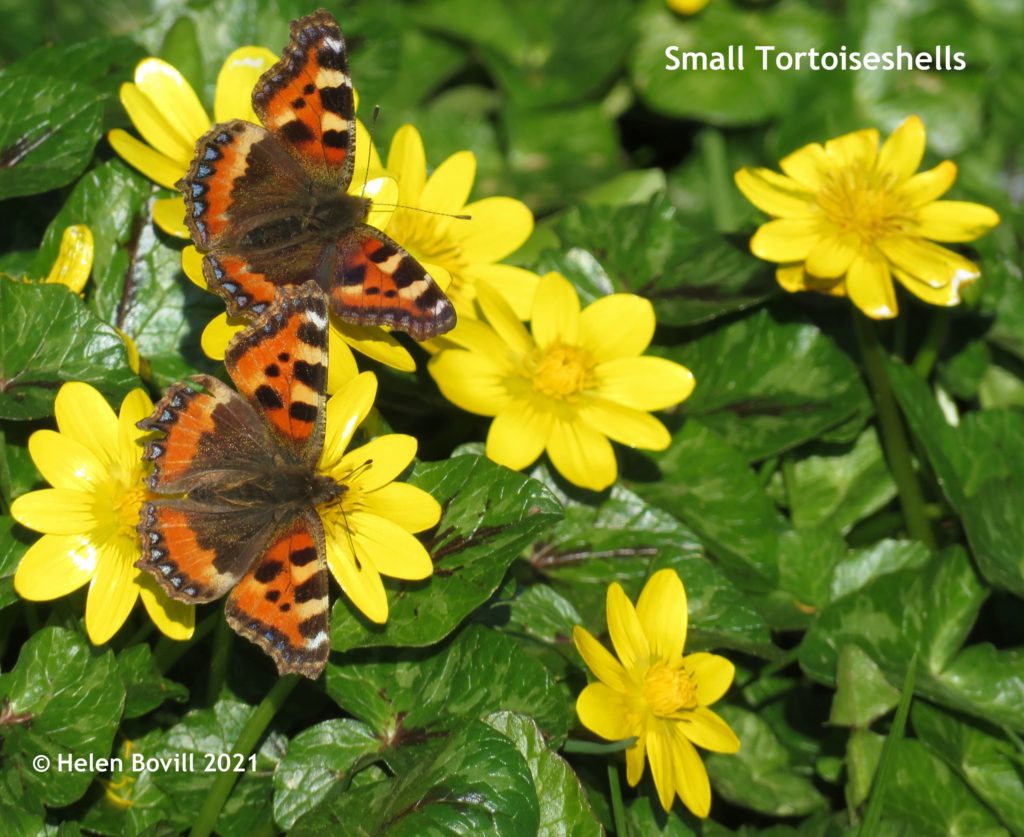
Butterfly sightings continued throughout March whenever it was sunny, with some more Small Tortoiseshells and 2 more Peacocks seen on the grass verge just before the Spring Equinox.
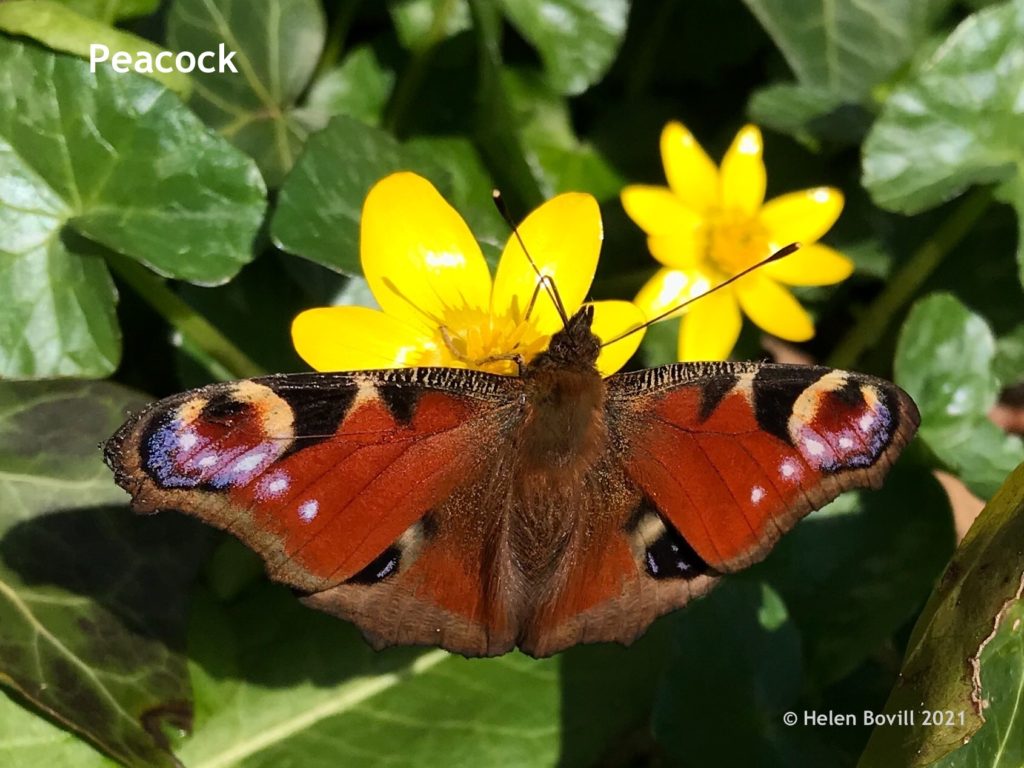
A Comma, another butterfly that overwinters as an adult, was seen later in March, again on the grass verge. It gets its name from a distinctive white comma-shaped mark on the underside of its wings.
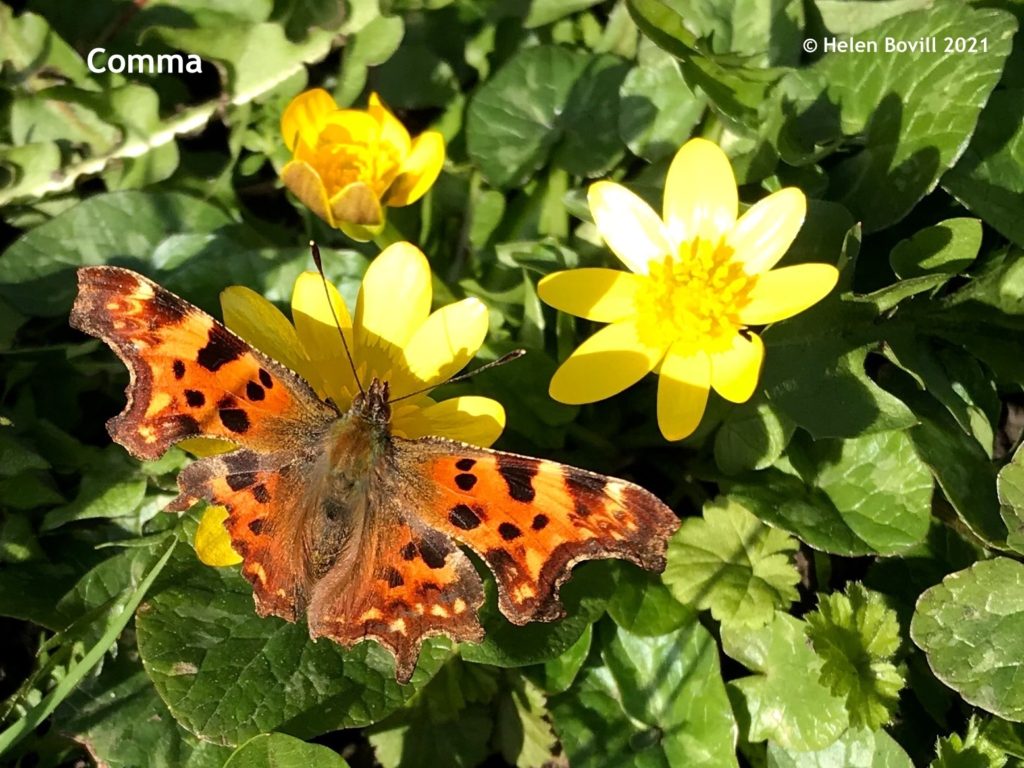
There were lots of other insects buzzing around the grass verge in late March too including a Bee-fly, the first time I’ve seen one there. This small fluffy fly is harmless to humans and uses its long proboscis to get nectar from flowers. When hovering its wings seemingly disappear in a blur of movement.

Birds
There are several Wood Pigeons living in the cemetery and these can be seen every day pecking around on the ground or flying noisily in and out of the trees.
There is also a pair of resident Stock Doves and these are usually seen together, sometimes with the Wood Pigeons. Stock Doves are around the same size as feral Pigeons and sometimes hang around with them too.
The Stock Dove is on the left of the photo – its band of blue/green feathers is larger and more noticeable than on the Wood Pigeon and it lacks the white patch. The Wood Pigeon is the larger of the two species although this is not apparent from the photo.
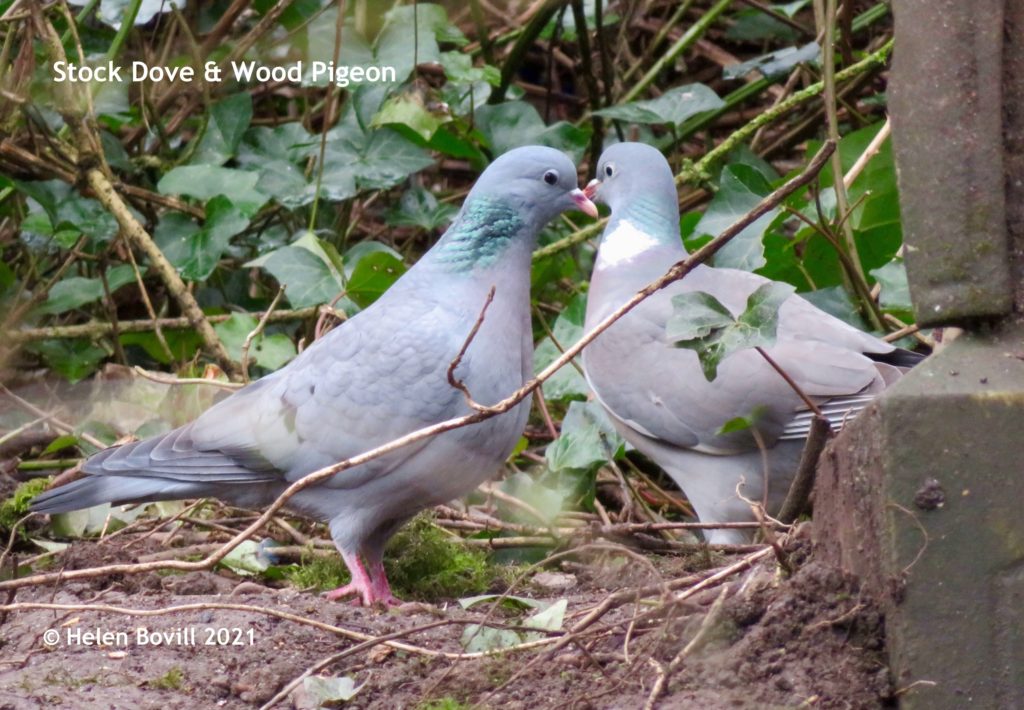
The smaller birds have started to pair up and look for suitable nesting sites, but I’ll say more about them in the next newsletter.
Overall a very good start to the year, and with many of the trees and shrubs already showing small green shoots there is the promise of much more wonderful wildlife to come!
Postscript: Helen Bovill
Helen Bovill is a member of the FOHGC. She is a gifted naturalist and photographer. Her photographs have graced the FOHGC Facebook site for a while now. It’s with great pleasure that we now have the chance to share in her knowledge and expertise here. Helen has kindly consented to write an article every month on the broad subject of nature for the website newsletter. This is the first of what I hope will be many such articles. So sit back and enjoy.

Pete Lowden is a member of the Friends of Hull General Cemetery committee which is committed to reclaiming the cemetery and returning it back to a community resource.

